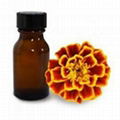| Model: | NH11 |
|---|---|
| Brand: | Nature Herbs |
| Origin: | Made In India |
| Category: | Agriculture & Foods / Gardening / Plant Seeds |
| Label: | Botanical Extracts , Herb Seeds , Essential Oils |
| Price: |
-
|
| Min. Order: | 100 kg |
| Last Online:28 Feb, 2015 |
Introduction
Bacopa monniera, also referred to as Bacopa monnieri, Herpestis monniera, water hyssop, and “Brahmi,” has been used in the Ayurvedic system of medicine for centuries. Traditionally, it was used as a brain tonic to enhance memory development, learning, and concentration,1 and to provide relief to patients with anxiety or epileptic disorders.2 The plant has also been used in India and Pakistan as a cardiac tonic, digestive aid, and to improve respiratory function in cases of bronchoconstriction.3 Recent research has focused primarily on Bacopa’s cognitive-enhancing effects, specifically memory, learning, and concentration, and results support the traditional Ayurvedic claims. Research on anxiety, epilepsy, bronchitis and asthma, irritable bowel syndrome, and gastric ulcers also supports the Ayurvedic uses of Bacopa. Bacopa’s antioxidant properties may offer protection from free radical damage in cardiovascular disease and certain types of cancer.
Description
Bacopa monniera, a member of the Scrophulariaceae family, is a small, creeping herb with numerous branches, small oblong leaves, and light purple flowers. In India and the tropics it grows naturally in wet soil, shallow water, and marshes. The herb can be found at elevations from sea level to altitudes of 4,400 feet, and is easily cultivated if adequate water is available. Flowers and fruit appear in summer and the entire plant is used medicinally.2,4
Active Constituents and Pharmacokinetics
Compounds responsible for the pharmacological effects of Bacopa include alkaloids, saponins, and sterols. Many active constituents – the alkaloids Brahmine and herpestine, saponins d-mannitol and hersaponin, acid A, and monnierin – were isolated in India over 40 years ago. Other active constituents have since been identified, including betulic acid, stigmastarol, beta-sitosterol, as well as numerous bacosides and bacopasaponins. The constituents responsible for Bacopa’s cognitive effects are bacosides A and B.5-9
Bacopa monniera was distributed in the warmer and wetlands regions of the world. It was widely used in traditional medicine to treat various complains. Bacopa monniera contained alkaloid brahmine , nicotinine, herpestine, bacosides A[3-( α-L-arabinopyranosyl)-O-β-D-glucopyranoside-10, 20-dihydroxy-16-keto-dammar-24-ene] , triterpenoid saponins , saponins A, B and C, betulinic acid , D-mannitol , stigmastanol , β-sitosterol , stigmasterol. and pseudojujubogenin glycoside. The pharmacological studies showed that Bacopa monniera possessed many pharmacological effects included central nervous effects ( memory enhancement , antidepressant , anxiolytic , anticonvulsant and antiparkinsonian ) , antioxidant , gastrointestinal , endocrine , antimicrobial , anti-inflammatory , analgesic , cardiovascular and smooth muscle relaxant effects. The present review focused on the chemical constituents and pharmacological effects of Bacopa monniera.
Introduction:
Plant derivates had been employed by population to prevent different kind of diseases for centuries. The knowledge of plant properties was acquired by ancient civilization that passed down from generation to generation until today. Bacopa monniera (synonyms: Lysimachia monnieri L. Cent., Gratiola monnieri L., Monniera cuneifolia and Herpestis monniera L.) (1), which commonly known as (bacopa, brahmi, and thyme leaved gratiola), belongs to the scrophulariaceae family, was distributed in the warmer and wetlands regions of the world. It was used in traditional medicine to treat various nervous disorders, as a brain tonic to enhance memory development, learning, and concentration, and to provide relief to patients with anxiety; it is also used in digestive complains, for skin disorders, and as an antiepileptic, antipyretic, and analgesic (1-2). Bacopa monniera contained alkaloid brahmine , nicotinine, herpestine, bacosides A[3-( α-L-arabinopyranosyl)-O-β-Dglucopyranoside-10,20-dihydroxy-16-keto-dammar-24-ene], triterpenoid saponins , saponins A, B and C, betulinic acid , D-mannitol , stigmastanol , β-sitosterol , stigmasterol and pseudojujubogenin glycoside(5-12)
Chemical constituents:
.
The pharmacological studies showed that Bacopa monniera possessed many pharmacological effects included central nervous effects ( memory enhancement, antidepressant, anxiolytic, anticonvulsant and
antiparkinsonian), antioxidant, gastrointestinal, endocrine, antimicrobial, anti-inflammatory, analgesic,
cardiovascular and smooth muscle relaxant effects. The present review aimed to highlight the chemical
constituents and pharmacological effects of Bacopa monniera.
Bacopa monniera contained alkaloid brahmine , nicotinine, and herpestine(5-6). Bacosides A [3-( α-Larabinopyranosyl)-O-β-D-glucopyranoside-10, 20-dihydroxy-16-keto-dammar-24-ene] was isolated from Bacopa monniera. Triterpenoid saponins, saponins A, B and C and pseudojujubogenin glycoside were also isolated from Bacopa monniera. They identified as 3-O-α-L-arabinopyranosyl-20-O-α-L-arabinopyrasonyljujubogenin,3-O-[α-L-arabinofuranosyl-(1→2)-α-L-arabinopyranosyl]
pseudojujubogenin , 3-O-β-Dglucopyranosyl(1→3)-{α-L-arabinofuranosyl-(1→2)}-α-L
arabinopyrasonyl] pseudojujubogenin and 3-O-[α-L-arabinofuranosyl-(1→2)-β-D-glucopiranosyl] pseudojujubogenin. Bacopasides I , II , III, IV and V were also isolated from Bacopa monniera , which identified as 3-O-α-L- arabinofuranosyl-(1→2)-β-Dglucopyranosyljujubogenin,
3-O-β-D-glucopyranosyl-(1→3)-α-L-arabinopyranosyl jujubogenin, 3-O- β-Dglucopyranosyl-(1→3)-α-L-arabinofuranosyl pseudojujubogenin(7-11) Bacopa monniera also contained betulinic acid , D-mannitol , stigmastanol , β-sitosterol and stigmasterol.











